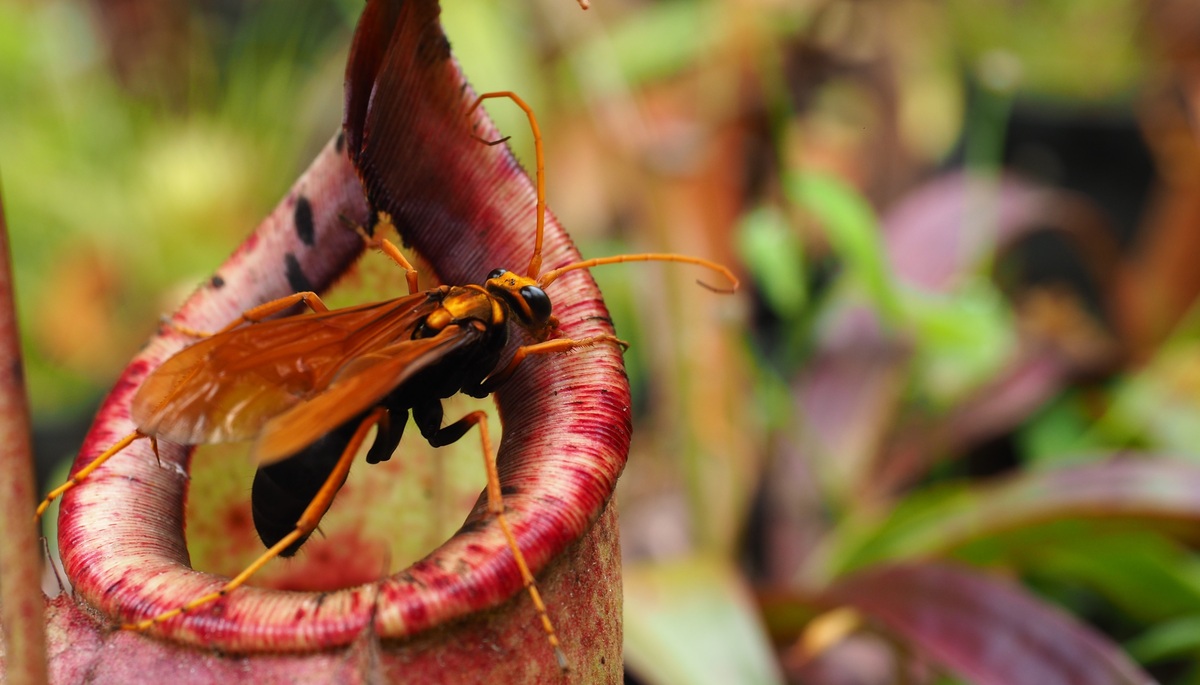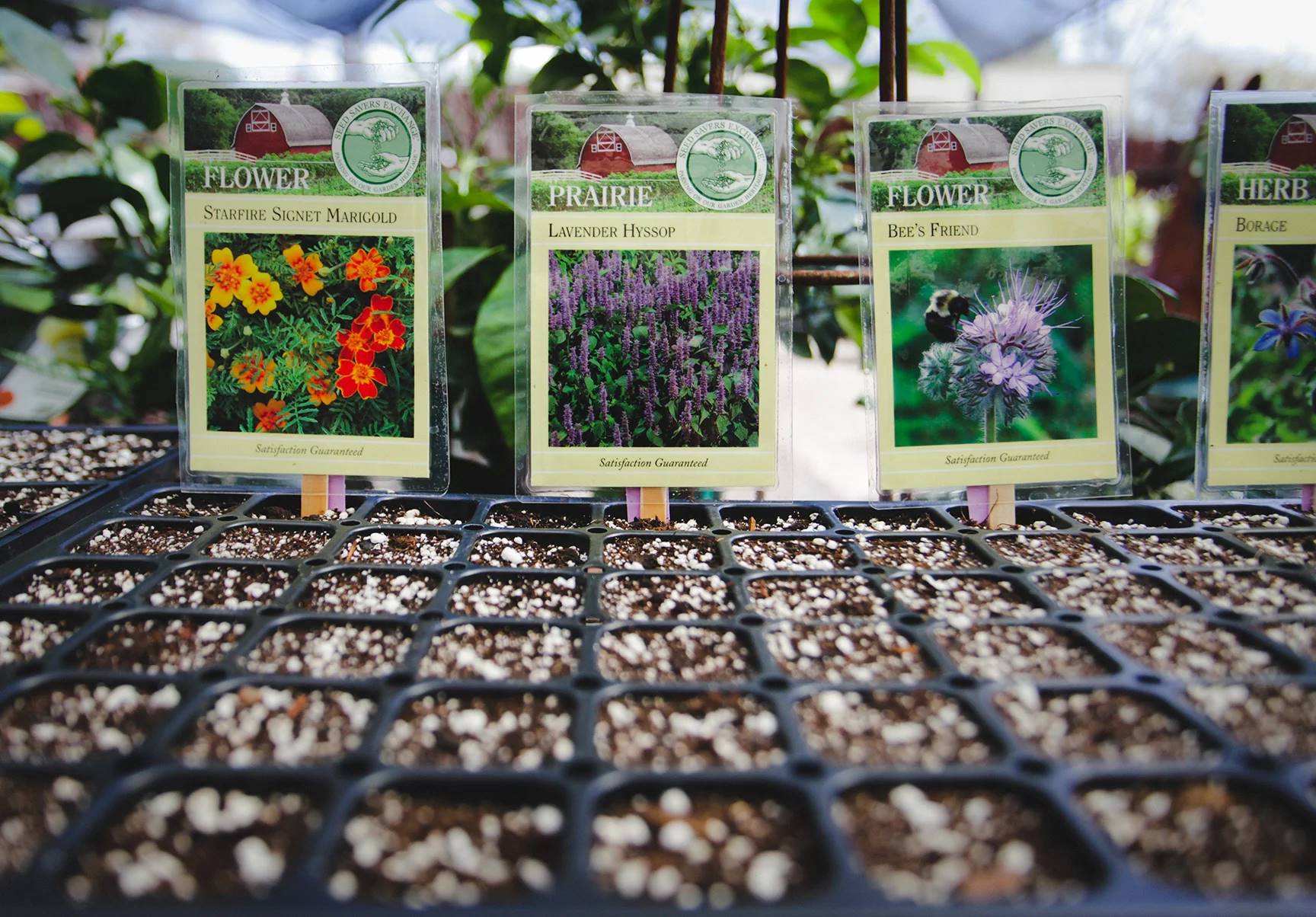Home>Gardening News and Trends>Latest News>Explain How The Insects Are Trapped In Amber And Preserved.


Latest News
Explain How The Insects Are Trapped In Amber And Preserved.
Published: December 4, 2023
Discover the fascinating process of trapping and preserving insects in amber. Stay updated with the latest news on this remarkable natural phenomenon.
(Many of the links in this article redirect to a specific reviewed product. Your purchase of these products through affiliate links helps to generate commission for Chicagolandgardening.com, at no extra cost. Learn more)
Table of Contents
Introduction
Welcome to the fascinating world of amber – the golden gemstone that holds ancient secrets locked in time. Amber is renowned for its ability to trap and preserve prehistoric insects and other small organisms, providing invaluable insights into the past. This natural wonder has intrigued scientists, historians, and enthusiasts for centuries, offering a window into worlds long gone.
Amber, or fossilized tree resin, is formed over millions of years through a captivating process. As resin oozes from trees, it can entrap insects and other small creatures on its sticky surface. Over time, this sticky resin hardens and fossilizes, creating a unique and durable material that can survive for millions of years.
Trapped within amber, these organisms are frozen in time, offering a glimpse into ecosystems that existed millions of years ago. The preservation of these trapped creatures is exceptionally rare and remarkable, providing an unparalleled opportunity to study ancient biodiversity and evolutionary processes.
Amber has been hailed as a time capsule, capturing ancient insects in exquisite detail. The transparency and durability of amber allow us to observe intricate anatomical features, behaviors, and even traces of DNA of long-extinct species. These ancient specimens offer a wealth of information about past ecosystems, climate conditions, and the evolution of various organisms.
Interestingly, the study of amber goes beyond scientific curiosity. It has captivated the imagination of people throughout history, becoming a cherished gemstone and a symbol of beauty and timelessness. Its use in jewelry and decorative objects reflects the allure and enchantment associated with this magical substance.
This article will delve into the formation process of amber, how insects become trapped within it, the importance of this phenomenon, and the scientific significance of preserved insects in amber. Join us on this journey as we explore the captivating world of amber and unravel the secrets locked within.
Formation of Amber
Amber, the precious gemstone that preserves ancient life, begins its journey deep within the heart of trees. It starts as a sticky, aromatic resin that oozes from certain types of trees, such as pines, firs, and angiosperms.
When a tree is injured or stressed through physical damage, disease, or insect activity, it generates resin as a defensive response. This resin serves to seal and protect the wounded area, preventing further damage and infections.
Over time, this resin can flow down the trunk or branches of the tree, collecting in cracks or forming droplets on the bark. As the resin envelopes the tree, it begins to undergo a series of complex chemical changes that lead to the formation of amber.
The first stage of amber formation is called polymerization. The resin molecules, which are composed of various organic compounds, start to link together under the right conditions of temperature, pressure, and microbial activity. This process causes the resin to undergo a solidification process, transforming it into a substance that is sticky and viscous.
As time passes, these sticky droplets of resin gradually harden into a solid form. This process can take anywhere from a few decades to millions of years, depending on the specific conditions and the type of resin involved.
The next stage in the formation of amber is known as fossilization. During this process, the hardened resin undergoes further chemical changes. It becomes more resistant to decay and is gradually transformed into a durable material that can withstand the test of time.
Through the process of fossilization, the resin can become buried in sediment, gradually becoming embedded within layers of rocks and minerals. This burial protects the resin from exposure to air and other environmental factors, allowing it to undergo further transformation over extended periods.
Over millions of years, the buried resin can experience geological pressures and high temperatures. These conditions cause the resin to polymerize even further, forming an amorphous solid similar to glass. This solidification process ultimately gives rise to the exquisite gemstone that we know as amber.
Once formed, amber can be found in various geological formations, such as sedimentary rocks, riverbeds, or even washed up on beaches after being carried by water bodies. Its distinctive warm color and unique properties make it easily distinguishable from other minerals and gemstones.
The formation of amber is a mesmerizing journey that starts with the humble resin of a tree and ends with a timeless gemstone that traps and preserves life from the past. It is this process that has fascinated scientists and collectors alike for centuries, offering a glimpse into the ancient world preserved within its golden embrace.
Trapping Process
The process of trapping insects in amber is a remarkable phenomenon that occurs when these small organisms come into contact with sticky resin exuded by certain trees. Once entangled in the resin, they become effectively preserved, suspended in time for millions of years.
When an insect lands on a tree covered in resin, its delicate legs and body can become stuck in the sticky substance. This initial contact is often accidental, with the insect mistaking the resin for a suitable landing spot or food source. Once trapped, the insect struggles to free itself, unknowingly sealing its fate.
The stickiness of the resin is a crucial factor in the trapping process. It acts as a natural adhesive, offering remarkable consistency and viscosity that can immobilize insects and other small organisms upon contact. Some researchers believe that the resin’s sticky nature might have evolved as a defense mechanism for the tree, deterring insects and pathogens from damaging it.
The trapping process is not limited to just flying insects. Small creatures like spiders, ants, beetles, and even tiny reptiles and mammals can also become ensnared in the resin. The effectiveness of the trapping process varies depending on several factors, including the size and weight of the insect, the stickiness of the resin, and the insect’s ability to struggle and attempt escape.
Once trapped, the insect becomes suspended in the resin, which gradually hardens and solidifies over time. This encasement provides a protective shield against the environment, including oxygen, moisture, and decay-causing microorganisms. The resin’s preservation properties combined with the inert conditions within the encased amber result in exceptional fossilization and the long-term preservation of the trapped insect.
It is important to note that not all trapped organisms are preserved as fossils in amber. Many factors come into play, including the specific conditions under which the resin was deposited, the quality of the resin, and the subsequent geological processes that occur over time. The chances of an insect becoming trapped and preserved in amber are relatively low, making the discovery of well-preserved specimens all the more significant.
The trapping process in amber represents a remarkable and fortunate encounter between the sticky resin exuded by certain trees and the unsuspecting insects that come into contact with it. This natural preservation mechanism offers a unique and invaluable glimpse into the diverse and ancient world of insects and other organisms from millions of years ago.
Importance of Amber Trapping
The trapping of insects and small organisms in amber holds immense significance in various fields, including paleontology, evolutionary biology, ecology, and even the study of ancient climates. This captivating phenomenon offers a variety of invaluable insights and contributions to our understanding of the natural world.
First and foremost, amber trapping provides a unique opportunity to study ancient biodiversity. The preserved insects and organisms encapsulated in amber reveal a wealth of information about the past ecosystems and the diversity of species that inhabited them. These ancient specimens offer a rare glimpse into the evolutionary history of organisms, providing evidence of their behavior, anatomy, and ecological interactions.
Amber also allows scientists to study the impact of environmental changes over time. By examining the organisms trapped in amber, researchers can gain insights into how species respond and adapt to shifts in climate, land formations, and geological events. This information is crucial for understanding the resilience of ecosystems and the impact of environmental factors on the survival and evolution of species.
Moreover, amber trapping provides a means to study extinct species and ecosystems that are otherwise inaccessible. These well-preserved specimens offer opportunities for detailed anatomical analysis, including the examination of soft tissues, which are typically not fossilized in conventional fossil records. By studying these ancient creatures, scientists can reconstruct the morphology, behavior, and even genetic makeup of extinct organisms.
Amber specimens are also invaluable for understanding the coevolution of insects and plants. The intricate details of insects preserved in amber provide insights into their interactions with specific plant species, such as pollination, herbivory, and seed dispersal. By analyzing these ancient insect-plant relationships, researchers can piece together the puzzle of how different species have coevolved and shaped ecosystems throughout history.
Additionally, the study of amber trapping contributes to our knowledge of ancient climatic conditions. By analyzing the composition of amber and the types of organisms trapped within it, scientists can infer the environmental conditions that existed in the past. This information aids in our understanding of past climates, including temperature, humidity, vegetation patterns, and even atmospheric composition.
Finally, the visual and aesthetic appeal of amber holds cultural significance as well. Since ancient times, amber has been revered as a valuable material for jewelry, amulets, and ornamental objects. It has captured the human imagination, symbolizing beauty, timelessness, and the connection to the ancient world.
The importance of amber trapping extends far beyond a mere curiosity. It serves as a scientific treasure trove, offering a unique window into the past and enriching our knowledge of Earth’s history, ancient life forms, and ecological processes. The study of amber and the organisms it preserves continues to unveil new insights and contribute to numerous scientific disciplines.
Preservation of Insects in Amber
The preservation of insects in amber is a remarkable process that allows these ancient creatures to be perfectly encapsulated and protected for millions of years. Through a combination of the resin”s physical properties and the unique environmental conditions within the amber, the delicate structures of insects are preserved with astonishing fidelity.
One of the key factors in the preservation of insects in amber is the resin”s ability to create an airtight seal. As the resin hardens and solidifies, it forms a protective barrier around the trapped insect, preventing the entry of oxygen, moisture, and other agents of decay. This airtight environment significantly slows down decomposition and helps to maintain the structural integrity of the insect”s body.
The chemical composition of the resin also plays a role in the preservation process. Resin is rich in terpenes, which are volatile organic compounds that can repel insects and prevent fungal growth. These compounds act as natural preservatives, hindering the decomposition of the insect by inhibiting the growth of bacteria and fungi within the amber.
Additionally, the opaque nature of amber shields the trapped insect from harmful ultraviolet radiation. Ultraviolet light can cause damage to DNA and other cellular structures, leading to deterioration over time. The amber acts as a natural sunscreen, protecting the insect from these harmful rays and preserving its genetic information and delicate features.
Furthermore, the stable environment within the amber helps to preserve the delicate structures of the insect. The resin solidifies into a benign matrix, not subject to the compressive forces and chemical reactions that occur during the process of fossilization. This stability ensures that the intricate details, such as the wings, antennae, and even microscopic features, are beautifully preserved and can be studied in great detail.
Insect specimens preserved in amber provide an unprecedented level of detail and offer insights into their morphology, physiology, and behavior. The transparency of amber allows researchers to observe these ancient creatures without destructive methods, providing a non-invasive means of studying their anatomy and examining their interactions with the environment.
It is important to note that while insects trapped in amber may undergo some degradation over time, the preservation of their overall form and structure is astonishing. The organic compounds within the insect”s body can undergo diagenesis, which involves the chemical transformation of organic matter into more stable compounds. This process helps to maintain the overall shape and structure of the insect, albeit with some alterations in color and texture.
The preservation of insects in amber offers a unique opportunity to study ancient life forms in incredible detail. These perfectly preserved specimens provide scientists with a time capsule from the distant past and allow us to gain insights into the incredible diversity and complexity of prehistoric ecosystems.
Scientific Significance
The scientific significance of studying insects preserved in amber cannot be overstated. These ancient specimens provide a wealth of information that contributes to our knowledge of biodiversity, evolutionary processes, and the history of life on Earth.
One of the key scientific contributions of amber-trapped insects is the insight it provides into ancient ecosystems. By analyzing the diversity and distribution of insect species in different amber deposits, scientists can reconstruct the ecological dynamics of ancient habitats. This information helps to fill gaps in the fossil record and provides a more comprehensive understanding of past environments and the interrelationships between species.
Amber-trapped insects also offer a unique perspective on the evolutionary history and adaptations of various organisms. The exceptional preservation of their morphology allows scientists to observe minute details and uncover important evolutionary traits. By studying these ancient insects, researchers can track the evolutionary changes in different lineages, identify new species, and unravel the evolutionary mechanisms that have shaped the natural world.
In addition, the study of ancient DNA extracted from trapped insects in amber has revolutionized our understanding of genetics and evolution. In recent years, researchers have successfully sequenced and analyzed DNA from amber-encased insects, shedding light on their genetic makeup and enabling comparisons with modern-day species. This valuable genetic information provides insights into evolutionary relationships, divergence times, and even the potential resurrection of extinct organisms through cloning or genetic engineering.
Furthermore, amber-trapped insects offer a unique opportunity to study ancient behaviors and ecological interactions. The well-preserved specimens provide clues about the feeding habits, reproductive strategies, and social behaviors of extinct species. By understanding the behaviors of these ancient insects, scientists can gain insights into the role they played in past ecosystems, as well as the coevolutionary relationships between insects and other organisms.
The study of amber-trapped insects also contributes to our understanding of climate change and its impact on ecosystems. By examining the distribution of different insect species in amber over different geological time periods, scientists can infer changes in temperature, humidity, and vegetation patterns. This information helps to reconstruct past climate conditions and provides valuable data for climate modeling and predictions.
Moreover, the scientific significance of amber-trapped insects extends beyond the realm of biology. The diversity of insects preserved in amber offers insights into the history of Earth’s atmospheric composition, as well as the origins and evolution of mutualistic relationships between insects and plants.
In summary, the scientific significance of studying insects trapped in amber is immense. These unique specimens provide a window into the past, allowing scientists to reconstruct ancient ecosystems, track evolutionary changes, analyze ancient DNA, study behaviors, and gain insights into climate change and the coevolution of species. The remarkable preservation of these organisms in amber continues to unlock valuable information about the history of life on our planet.
Conclusion
The world of amber and the insects trapped within it offer a glimpse into ancient ecosystems, evolutionary processes, and the intricate tapestry of life on Earth. Through the mesmerizing process of resin formation and trapping, insects become encapsulated and preserved for millions of years, providing invaluable insights that shape our understanding of the natural world.
The formation of amber, starting from the sticky resin exuded by certain trees, creates a journey that spans millions of years. As the resin hardens and fossilizes, insects and other small organisms become trapped, frozen in time, and preserved in remarkable detail. The sticky nature of the resin, combined with the unique properties of amber, creates an airtight environment that protects the organisms from decay, fossilizing them with astounding fidelity.
The importance of amber trapping extends across scientific disciplines. Paleontologists study these well-preserved organisms, offering glimpses into ancient biodiversity and the evolutionary processes that have shaped life on Earth. The study of amber-trapped insects opens a window into past ecosystems, shedding light on their composition, interactions, and coevolutionary relationships.
The preservation of insects in amber also contributes to our understanding of ancient climates, the impact of environmental changes, and the genetic makeup of extinct species. Through cutting-edge techniques, scientists can extract and analyze DNA from these ancient insects, providing insights into their evolutionary history and potential implications for future research.
Moreover, amber itself holds cultural significance, captivating the human imagination and symbolizing beauty and timelessness. Its use in jewelry and ornamental objects has added to its allure throughout history, reflecting the enchantment associated with this magical substance.
In conclusion, the trapping and preservation of insects in amber are not merely phenomena from ancient times. They continue to inspire and contribute to our knowledge in paleontology, evolutionary biology, ecology, and climate science. The study of these ancient trapped insects invites us to unravel the mysteries of the past and gain a deeper understanding of the intricate workings of the natural world.









